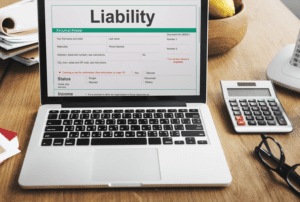
It ensures all debit and credit entries match up perfectly after closing entries. Also, it determines whether any balances are remaining in the permanent accounts after closing entries have been journalized. Since these are determined to be temporary accounts, it contains no sales revenue entries, expense journal entries, no gain or loss entries, etc.
What Does a Trial Balance Include?
What’s left are the accounts that get reported on the balance sheet and their non-zero balances, which is called a post-closing trial balance. Common errors include failing to close temporary accounts, incorrect transfer of balances, and arithmetic mistakes in the ledger. If debits do not equal credits, it indicates errors in the closing process or in the ledger, prompting a review to find and correct discrepancies. Yes, an example would list accounts like Cash, Accounts Receivable, Accounts Payable, and Retained Earnings with their respective balances, ensuring debits equal credits. Sometimes, certain transactions may be inadvertently unearned revenue left out of the ledger, resulting in an inaccurate trial balance.
Types of Trial Balances

Done monthly or yearly, it makes sure financial reports are right on point. They close revenue and expense accounts, adjust Income Summary and Dividends, and set temporary account balances to zero. Completing the accounting cycle correctly is crucial for corporate governance and truthful financial statements. It makes sure statements like the cash flow are accurate and truly represents the company’s financial health. The post-closing trial balance is the final step in the accounting cycle, serving as a checkpoint before the new accounting period begins. By confirming that accounts are balanced, it provides confidence that the financial statements are accurate.
Closing Entries and Their Impact on Financial Statements

For example, consider a multinational corporation that operates across multiple countries with different currencies and regulations. In the past, consolidating financial statements would be a labor-intensive post closing trial balance example process prone to errors. However, with the advent of sophisticated financial software, this process can be automated, ensuring accuracy and compliance while significantly reducing the time required for a close.
Adjusted Trial Balance Vs Post-Closing Trial Balance – Key Differences and Similarities
The post-closing trial balance is a crucial component of the accounting cycle, serving as the final step before a new accounting period begins. It is prepared after all closing entries have been made and posted to the ledger accounts. This trial balance ensures that all temporary accounts have been closed properly and that only permanent accounts remain with balances. By verifying the equality of debits and credits, the post-closing trial balance confirms that the accounts are ready for the next accounting period. The adjusted trial balance is a trial balance sheet that reveals the closing balance of all your general ledger accounts. The very purpose of adding these adjusted entries is to rectify the accounting errors in your unadjusted Trial Balance.
Real-World Examples of Post-Closing Trial Balances
From management’s perspective, this balance sheet is a sign-off on the past period’s financial activities. It’s a reassurance that the company is starting the new period on a clean slate. They might use the retained earnings figure from the post-closing trial balance to make decisions about dividends or reinvestments. Again, this means that all temporary accounts have been closed out, and the company has fresh books to begin tracking revenues and expenses in the new period.

This process ensures that the company’s books are ready for the next accounting period. At year-end, these accounts move their totals to the shareholders’ equity. And finally, in the fourth entry the drawing account is closed to the capital account.

For example, if a company earned a net income of $50,000, the accountant ensures this amount is transferred to the retained earnings account, resetting the revenue and expense accounts to zero. Keep in mind, this does not ensure that all journal entries were recorded accurately. Unlike the unadjusted and adjusted trial balances, the post-closing trial balance only includes permanent accounts and excludes all temporary accounts, which have been closed. In summary, the post-closing trial balance serves as a critical checkpoint in the accounting cycle. https://www.bookstime.com/articles/bookkeeping-san-antonio It validates the closing process and sets the stage for the next accounting period. By finalizing the books accurately, it contributes to the overall transparency and reliability of financial reporting.
- Learn how to prepare a post-closing trial balance, ensuring accuracy in financial reporting by verifying that all temporary accounts are closed and the ledger is balanced.
- Accountants are looking for a net-zero trial balance, which signals a successful period close and the end of the accounting cycle.
- To prepare a post-closing trial balance, the accountant or bookkeeper starts with a trial balance that lists all accounts with their debit or credit balances.
- The link between accrual accounting, adjustments, and closing entries is crucial.
- The old accounting period can be closed and the new accounting period can start once the post-closing trial balance is complete and all closing entries have been posted.
- If it’s out of balance, something is wrong and the bookkeeper must go through each account to see what got posted or recorded incorrectly.
It is crucial because it confirms the accuracy of the ledger after closing entries and ensures that all temporary accounts have been reset for the new accounting period. The post-closing trial balance is finished after closing entries and gets your accounts ready for the following period. The last trial balance prepared before the start of the new accounting period is known as a post-closing trial balance.